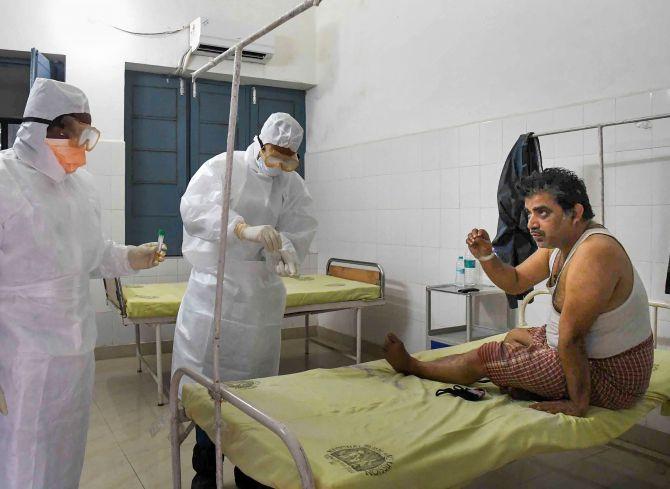Viral load during patient's admission determines outcome: Study
October 30, 2020 12:16

The levels of viral genetic material, or viral load, detected in Covid-19 patients at the time of admission can be a predictor of poor outcomes "above and beyond age, other medical problems, and severity of illness on presentation," according to a new study which says the measure can be used to risk-stratify those infected with the novel coronavirus.
The researchers, including those from New York University (NYU) Langone Health in the US, looked at the medical records of 314 patients who came to the emergency room between March 31 and April 10, 2020, diagnosed with Covid-19 on a molecular diagnostic (RT-PCR) test, who also had viral pneumonia serious enough to require hospitalisation.
In the study, published in the Annals of the American Thoracic Society, they examined whether the amount of RNA, or genomic load, of the coronavirus detected in swab tests of patients being admitted to the hospital with viral pneumonia is associated with more severe COVID-19.
"We demonstrated that for patients admitted to the hospital with COVID-19 pneumonia, SARS-CoV-2 load, as reflected by the cycle threshold (Ct) value of the PCR, should be looked at as a predictor of adverse outcomes," said study co-author Ioannis M. Zacharioudakis from NYU.
The scientists explained that the cycle threshold Ct value is one of the results that the PCR technique gives that can be used as a surrogate of the amount of virus that is detected on nasopharyngeal swabs.
"High viral load was shown to be a predictor of poor outcomes above and beyond age, other medical problems and severity of illness on presentation, indicating that it can be used to risk-stratify, or triage, patients," Zacharioudakis said. -- PTI





 © 2024 Rediff.com -
© 2024 Rediff.com -